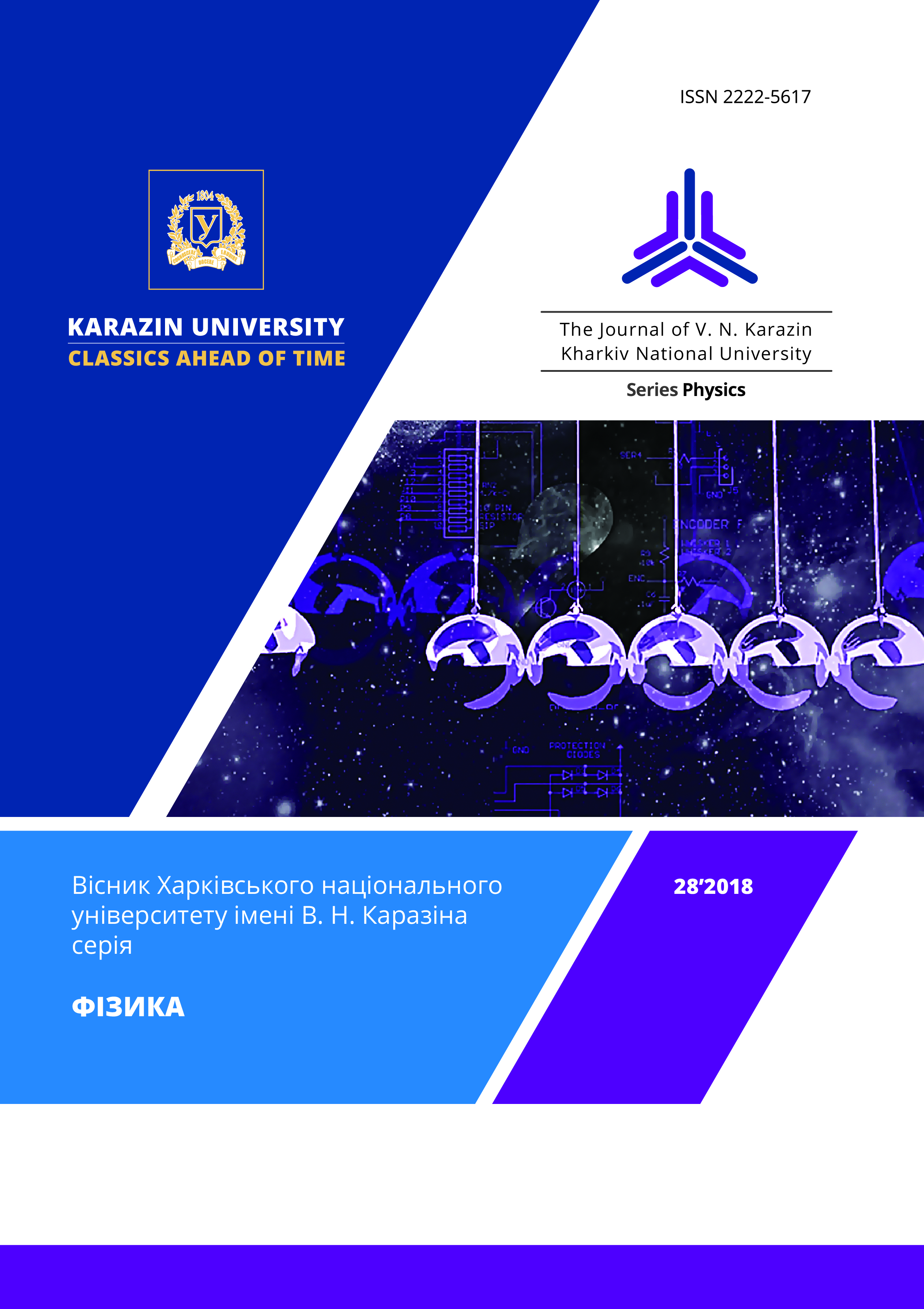Problems of modeling the creation the surface laser-induced structures in relaxed optics
Abstract
Experimental data of formation laser-induced surface structures on silicon, germanium and titanium are represented. Problems of modeling the creation the surface laser-induced micro and nanostructures are observed. Comparative analysis of plasmic, synergetic (theory of Benar phenomenon) and physical-chemical methods (cascade model of excitation the proper chemical bonds in the regime of saturation the excitation) are represented and discussed. These methods were used for modeling the processes of creation surface
laser-induced structures in silicon, germanium and titanium. Cascade model explanation these experimental data is more full and really as other models.
Downloads
References
Trokhimchuck P. P. Relaxed Optics: Realities and Perspectives. –Saarbrukken: Lambert Academic Publishing, 2016. –250 p.
A. Medvid’, “Nano-cones Formed on a Surface of Semiconductors by Laser Radiation: Technology Model and Properties,” Nanowires Science and Technology, ed. Nicoletta Lupu, Inech, Vukovar, pp. 61–82, 2010.
Haken H. Synergetics. – H. Haken. Мoscow: Mir, 1980. – 405 p. (In Russian).
Chandrasekar S. Hydrodynamic and Hydromagnetic Stability. – New York: Dover Publications, 1961. – 656 p.
Ebeling W. Creation structures under irreversible processes. – Moscow: Mir, Мoscow, 1979. – 278 p. (In Russian).
Trokhimchuck P. P. Nonlinear Dynamical Processes. – Lutsk: Vezha-Print, 2015. – 280 p. (In Ukrainian).
Pedraza A. J., Fowlkes J. D., Lowndes D. H. Silicon microcolumn arrays growth by nanosecond pulse laser irradiation.// Appl. Phys. Lett., vol. 74, no. 10, 1999. – P. 2222-2224.
A. J. Pedraza, Y. F. Guan, J. D. Fowlkes, D. A. Smith and D. H. Lowndes, “Nanostructures produced by ultraviolet laser irradiation of silicon. I. Rippled structures,” J. Vac. Sc. @ Techn. B., vol. 22, no. 10, pp. 2823-2835, 2004.
Tsukamoto M., Asuka K, Nakano N., Hashida M., Ratto M., Abe N., Fujita M. Period microstructures produced by femtosecond laser irradiation on titanium plate.// Vacuum, vol. 80, 2006. – P. 1346-1350.
Makin V. S. Peculiarities of the formation the ordered micro and nanjstructures in condenced matter after laser excitation of surface polaritons modes. D. Sc. (Physics and Mathematics) Thesis./ V. S. Makin. – Saint-Petersburg: State university of information technjlogies, mechanics and optics, 2013. – 384 p.
Donachie M. J. Titanium: A Technical Guide. – Ohio: Materials Park, 2000. – 380 p.
Birnbaum M. Semiconductor surface damage produced by Ruby Laser.// Journal of Applied Physics, vol. 36, Issue 11, 1965. – P. 3688–3689.
Shen M., Carey J. E., Crouch C. H., Kandyla M., Stone H. A. , Mazur E. High-density regular arrays of nanoscale rods formed on silicon surfaces via femtosecond laser irradiation in water. //Nanoletters, vol. 8, no.7, 2008. – P. 2087-2091.
Trokhimchuck P. P. Problems of reradiation and reabsorption in Relaxed Optics.// International Journal of Advanced Research in Physical Science (IJARPS). 2017. Vol. 4. № 2. P. 37 – 50.
Philips J.C. Metastable honeycomb model of laseannealing.//Journal of Applied Physics, No.12, Vol. 52, 1981. – P.7397–7402.
Tauc Ya. Optical properties of semiconductors in visible and ultraviolet ranges./Uspekhi fi zicheskikh nauk, 1968, Vol. 94, Is. 3, P. 501 – 533. (In Russian)
Trokhimchuck P. P. Radiation physics of status solid./ P. P. Trokhimchuck. – Lutsk: Lesya Ukrayinka Volyn’ National University Press “Vezha”, 2007. – 394 p. (In Ukrainian).
Druzhynin A. , Ostrovskii I., Kogut Yu. Silicon and Germanium Whispers and its Solid Solutions in Sensor Electronics. – Lviv: National University “Lvivska polytekhnika” Press, 2010. – 200 p. (In Ukrainian).








3.gif)
